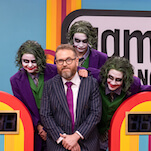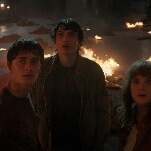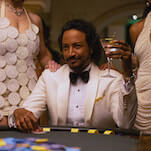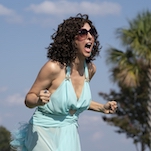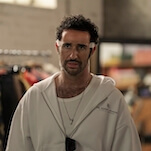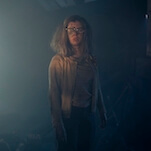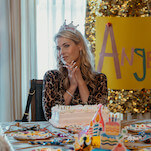A movie without men finds a clever way to stay true to its premise
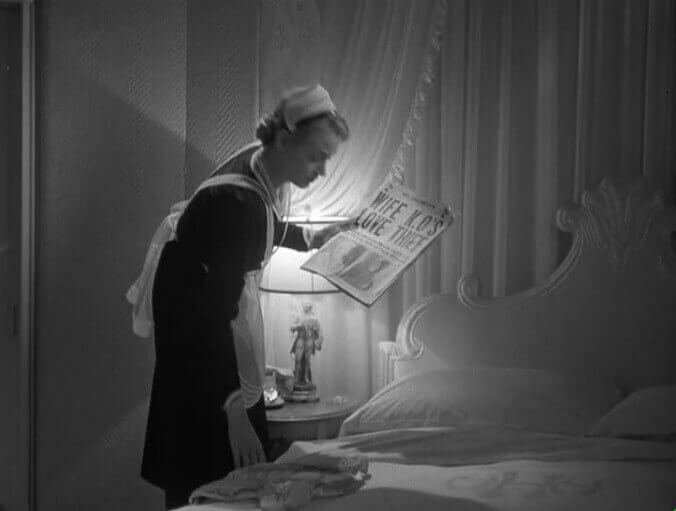
“It’s all about men!” proclaimed the poster for 1939’s The Women, and the marketing department wasn’t kidding. Adapted from the hit play by Clare Boothe Luce and directed by George Cukor (who was well known for his superlative work with actresses, though being pigeonholed as Hollywood’s go-to guy for “women’s films” reportedly annoyed him), this lengthy melodrama passes the Bechdel test, but just barely, and only thanks to a few quick conversations about fashion. Virtually all of the dialogue concerns the various characters’ husbands—specifically, whether or not they’re cheating and whether/how to hang onto them if indeed they are. That doesn’t make it a bad movie, of course, but it is a tad ironic, given the film’s unusual conceit: For the entirety of its two hours and 13 minutes, not a single man appears on screen, or is even so much as heard from off screen. While single-gender plays aren’t especially unusual, the movie version expands the cast significantly; IMDB’s entry for The Women lists a whopping 120 roles—many of them uncredited (as was common at the time), but every damn one of them played by a woman. (The same is true of the reportedly terrible 2008 remake, which starred Meg Ryan, Annette Bening, and Eva Mendes, among many others. That version only features about 60 speaking roles, though.)
Eliminating men entirely presented Luce with a real challenge. The Women’s primary storyline is a love triangle with one of its legs missing: Socialite Mary Haines (Norma Shearer) discovers that her husband, Stephen (nobody, never seen), is having an affair with Crystal Allen (Joan Crawford), who works the perfume counter at a ritzy department store. Various machinations ensue, and at roughly the movie’s midpoint, Mary decides to leave Stephen, heading for Reno to secure a divorce. Luce apparently wanted to dramatize this decision, but she couldn’t write the couple’s heated argument—at least, not directly. One option might have been to have the argument take place on the phone, with the viewer hearing only Mary’s half of the conversation; several other scenes in the film employ that strategy. In this case, however, Luce chose instead to have one of the wealthy family’s servants describe the argument to another. While that might sound as if it would constitute a tedious violation of the “show, don’t tell” rule, it turns out, improbably, to be one of the movie’s most purely enjoyable sequences—certainly, it’s a lot more fun than the actual fight would have been. Take a look:
Cukor opens the scene with a reminder of the event that became Mary’s final straw, showing a newspaper headline that reads “WIFE K.O.’S LOVE THIEF,” with the hilarious subhead “Society Matron Mauls Girl From The Wrong Side Of Park Avenue.” (It’s funnier when you’ve seen the actual showdown between Mary and Crystal—their first meeting in the movie—which is icy and vicious but involves no actual mauling. One of Mary’s most venal friends, played by Rosalind Russell, passed on false gossip that made its way to a reporter.) I confess that I spent a good five minutes trying to make out the text at the bottom of the page, some of which is barely legible even on Blu-ray. After several futile yells of “Enhance!,” I came up with, “The amazingly docile appearing and very lovely Mary Haines, wife of the well known [something] Stephen Haines of New York, today aroused considerable chaos in a [something] and pithy banter with a young perfume saleslady.” That might not all be correct, but “amazingly docile appearing”—what a glorious phrase!—is quite readable, and serves as a reminder that Mary confronting her husband’s mistress in public is something that, among the upper crust of 1930s America, was simply not done, mauling or no.
More significant, though, is the description of Crystal as “From The Wrong Side Of Park Avenue.” The Women doesn’t make an especially big deal out of it, but most of the film’s characters are insanely rich; at one point, Mary contemplates buying a nightgown that costs $225, which would be almost $4,000 today. Luce herself married not one but two millionaires (Henry Luce, a magazine titan, created Time, Life, Fortune, and Sports Illustrated), so she very likely had servants, and their eavesdropping may have inspired this scene. It’s taken directly from the play, though the Hays Code, which was then in effect, forced screenwriters Anita Loos (“What? Luce isn’t available? Well, get me Loos then!”) and Jane Murfin to remove a few of the more salacious exchanges (by the standards of that era). The younger servant’s name is Jane (Muriel Hutchison), and the older servant’s name is Maggie (Mary Cecil). Onstage, they also said stuff like this:
Jane: He was telling the madam: She’s a virgin.










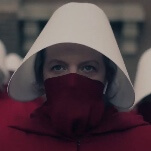

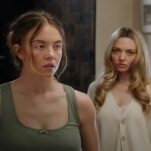

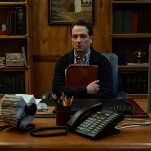
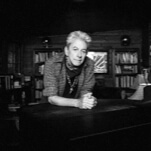




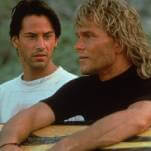







![Rob Reiner's son booked for murder amid homicide investigation [Updated]](https://img.pastemagazine.com/wp-content/avuploads/2025/12/15131025/MixCollage-15-Dec-2025-01-10-PM-9121.jpg)
